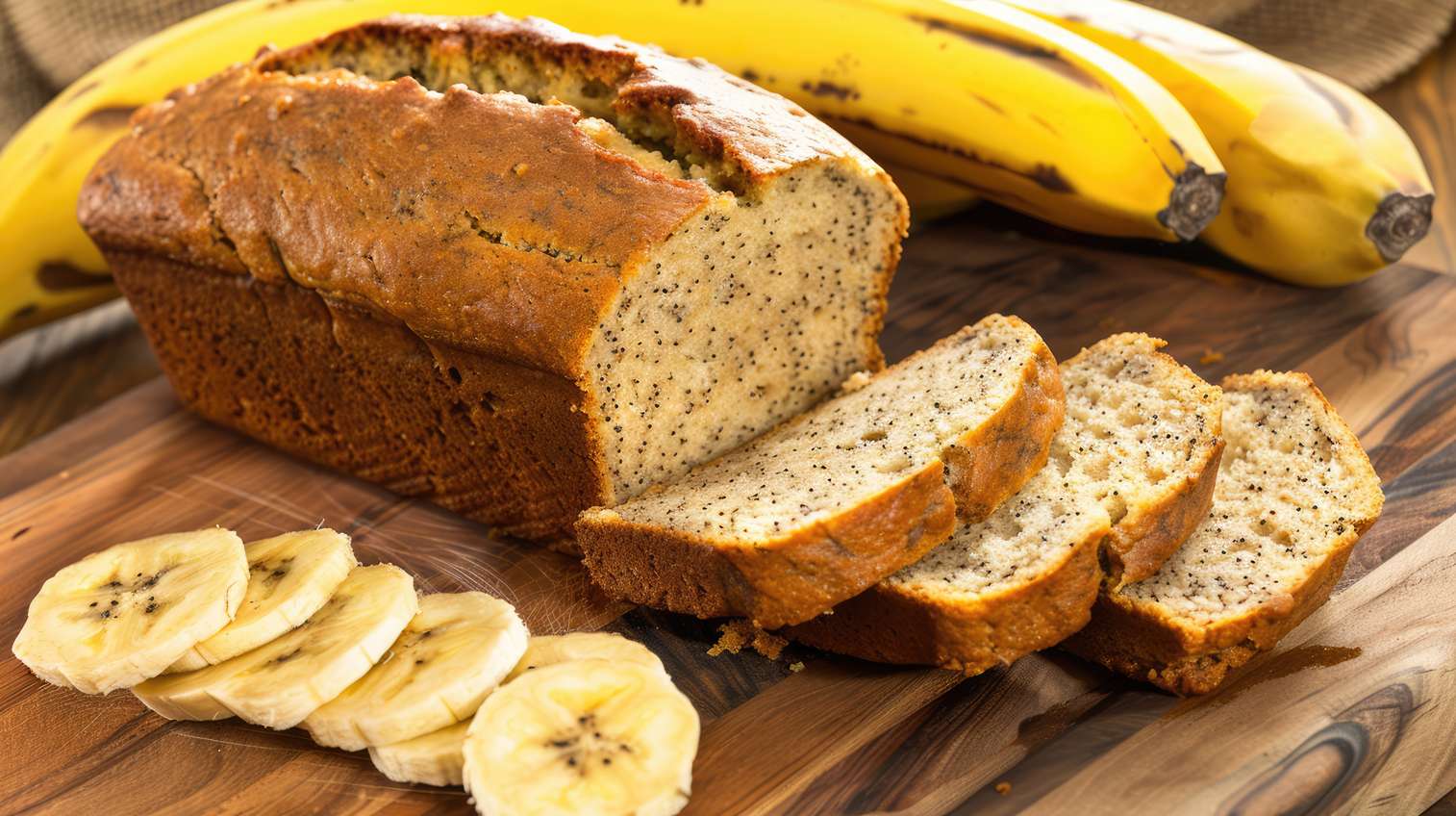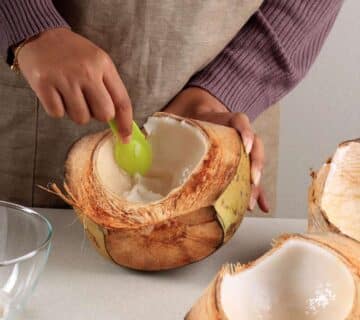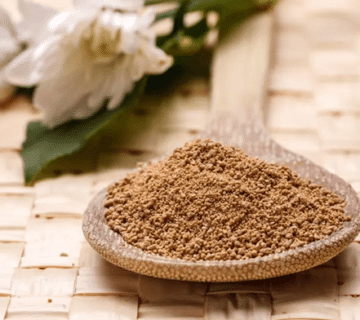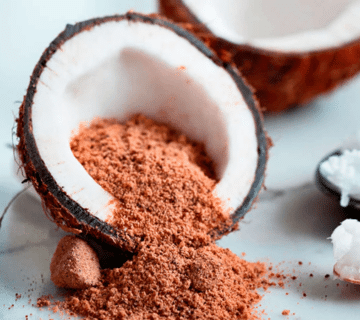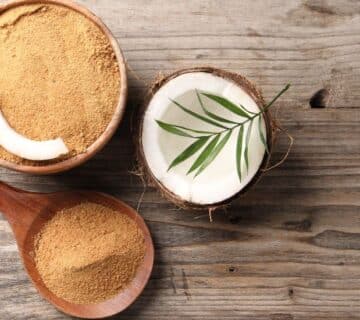Banana bread is a beloved classic that never goes out of style. Whether enjoyed as a breakfast treat, afternoon snack, or dessert, this moist and flavorful bread is a comforting choice. What if you could make it even healthier and add a new twist to the recipe?
Enter coconut sugar, a natural, unrefined sweetener that gives the bread a delicious caramel flavor while offering some health benefits. We will guide you through making a perfect coconut sugar banana bread. Feel the sweetness!
Why You’ll Love This Recipe
Coconut sugar banana bread is a delightful variation of the classic recipe, offering a unique depth of flavor and a more nutritious alternative to refined sugar.
Coconut sugar, derived from the sap of coconut palm trees, is known for its low glycemic index, which means it doesn’t spike blood sugar levels as much as traditional sugar. It also contains trace minerals like iron, zinc, calcium, and potassium, which contribute to its health benefits.
In addition to its health perks, coconut sugar lends a rich, slightly caramelized flavor that pairs beautifully with ripe bananas. It’s also a great choice for anyone looking to make their banana bread a bit more wholesome without sacrificing taste.
The result is a moist, sweet, and slightly nutty banana bread that can be enjoyed on any occasion, from casual brunches to special gatherings.
Coconut Sugar Banana Bread Recipe
This recipe is perfect to try at home—whether it’s for a family gathering, breakfast, or even a small event. Plus, kids are sure to love it with its delightfully sweet flavor. Give it a go and watch it become a favorite! Here’s the recipe:
A. Equipments
- Mixing bowls
- Whisk or electric mixer
- Measuring cups and spoons
- Spatula
- Loaf pan (9×5 inches)
- Parchment paper or non-stick spray
- Cooling rack
B. Ingredients
- 1 ½ cups all-purpose flour (or a whole-grain alternative for added fiber)
- 1 teaspoon baking soda
- ½ teaspoon salt
- ½ teaspoon cinnamon (optional but adds a warm, comforting flavor)
- 3 large ripe bananas (the riper, the better)
- ¾ cup coconut sugar (adds sweetness and a hint of caramel flavor)
- ⅓ cup melted coconut oil (or another neutral oil like vegetable or canola oil)
- 1 teaspoon vanilla extract
- 2 large eggs (at room temperature)
- Nuts like walnuts or pecans, chocolate chips, or dried fruit like raisins or cranberries (optional)
C. Steps
1. Prepare Your Ingredients
Start by preheating your oven to 350°F (175°C). Grease a 9×5-inch loaf pan with non-stick spray or line it with parchment paper for easy removal. Gather all the ingredients and let the eggs come to room temperature while you mash the bananas.
2. Mix the Dry Ingredients
In a large mixing bowl, whisk together the flour, baking soda, salt, and cinnamon. The dry ingredients should be well combined to ensure an even distribution throughout the batter.
3. Prepare the Wet Ingredients
In another bowl, mash the ripe bananas with a fork until smooth. Add the coconut sugar, melted coconut oil, vanilla extract, and eggs. Whisk until the mixture is well combined and smooth. The bananas should add natural sweetness and moisture, while the coconut oil helps make the bread tender and moist.
4. Combine the Wet and Dry Ingredients
Slowly add the wet ingredients into the dry ingredients. Using a spatula, gently fold them together. Be careful not to overmix, as this can result in a dense loaf. If you’re adding mix-ins like nuts, chocolate chips, or dried fruit, fold them in at this stage.
5. Bake the Banana Bread
Pour the batter into the prepared loaf pan, spreading it evenly. Place the pan in the preheated oven and bake for 55-65 minutes, or until a toothpick inserted into the center comes out clean. The bread should be golden brown and the kitchen will smell wonderful by the time it’s ready.
6. Cool and Serve
Once baked, remove the banana bread from the oven and let it cool in the pan for 10-15 minutes. Then, carefully transfer it to a cooling rack to cool completely before slicing. Enjoy it warm or at room temperature, and serve with your favorite toppings like butter, cream cheese, or even more bananas!
Ready to Try Coconut Sugar Banana Bread?
Organic coconut sugar has become a popular alternative to traditional sweeteners for those looking for healthier options. It is minimally processed, meaning it retains more of its natural nutrients compared to refined white sugar.
Coconut sugar also has a lower glycemic index (GI) than white sugar, making it a better choice for people who want to maintain steady blood sugar levels. While coconut sugar is still a form of sugar and should be consumed in moderation, its slower impact on blood sugar which is the reason why coconut sugar is good for diabetics.
In some countries, coconut sugar can be quite pricey due to its tropical origins. That’s why it’s essential to have reliable organic coconut sugar suppliers who can export their products. Sari Coconut is here to meet that demand, offering safe delivery and competitive prices.
But that’s not all—Sari Coconut also provides a variety of other coconut products, including Shisha Coconut Charcoal Briquettes, RBD Coconut Oil, Virgin Coconut Oil (VCO), Coconut Fiber, and Desiccated Coconut. All of our products are made from high-quality coconuts sourced right from Indonesia. Go place your order now!
FAQ
Can I substitute coconut sugar with regular sugar in this recipe?
Yes, you can use regular sugar if you don’t have coconut sugar on hand, but the flavor will be different. Coconut sugar adds a caramel-like richness, while regular sugar provides a more neutral sweetness.
Is coconut sugar healthier than white sugar?
Coconut sugar has a lower glycemic index and contains small amounts of nutrients like iron, zinc, calcium, and potassium. While it’s healthier than refined sugar, it should still be used in moderation as it’s still a form of sugar.
Can I make this recipe gluten-free?
Absolutely! You can substitute the all-purpose flour with a gluten-free flour blend to make the recipe gluten-free. Just ensure the blend you choose is suitable for baking.

